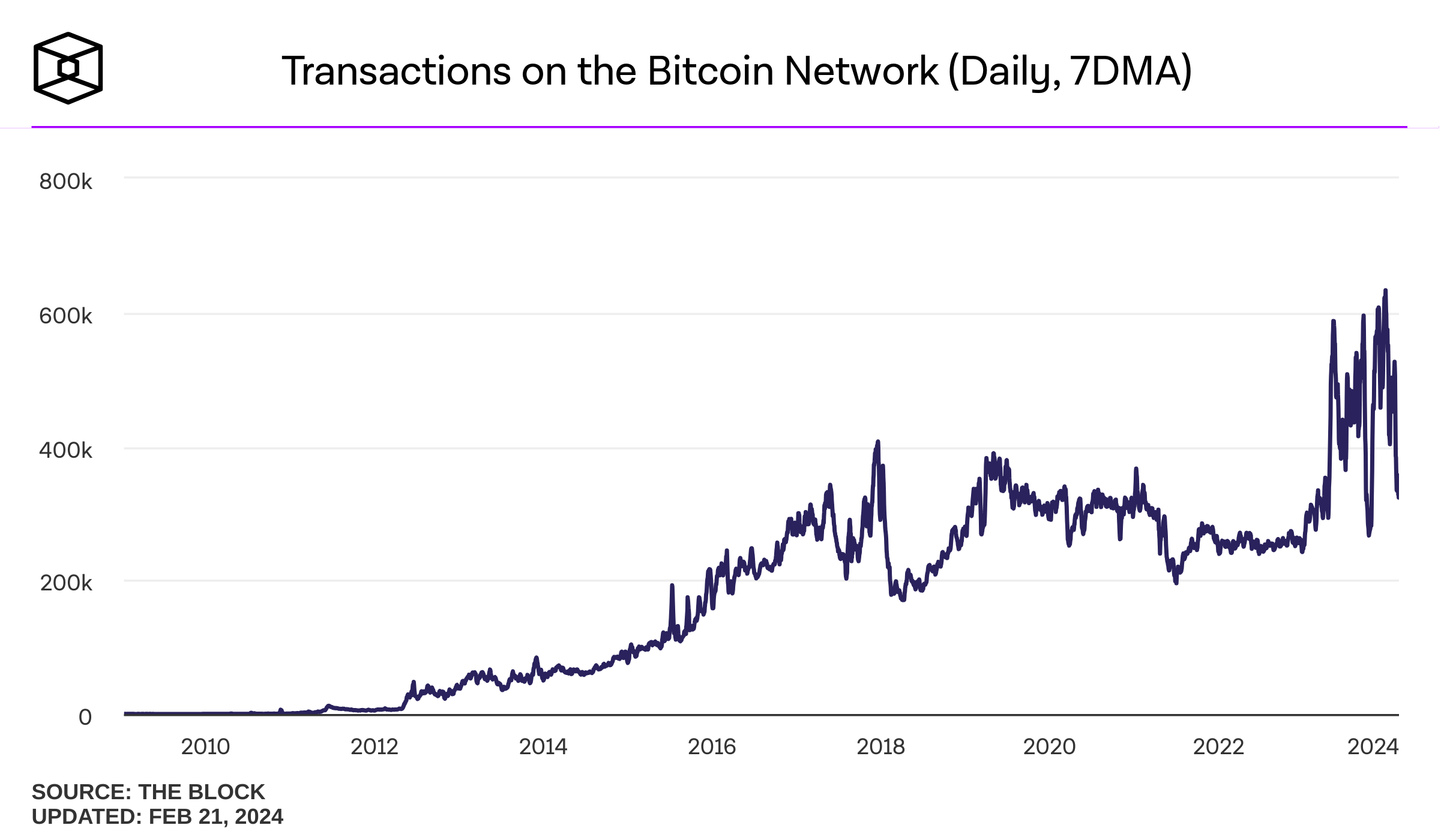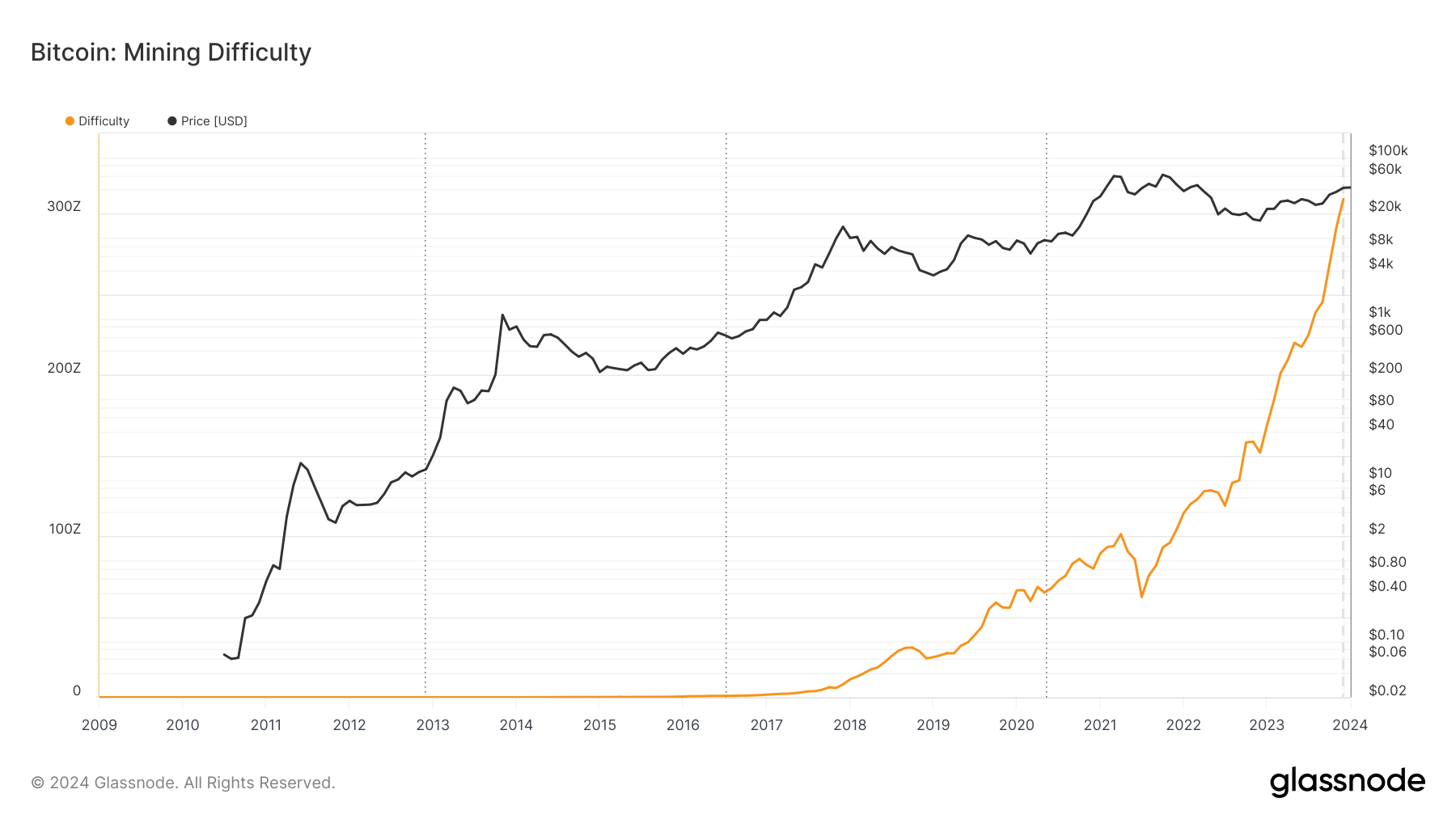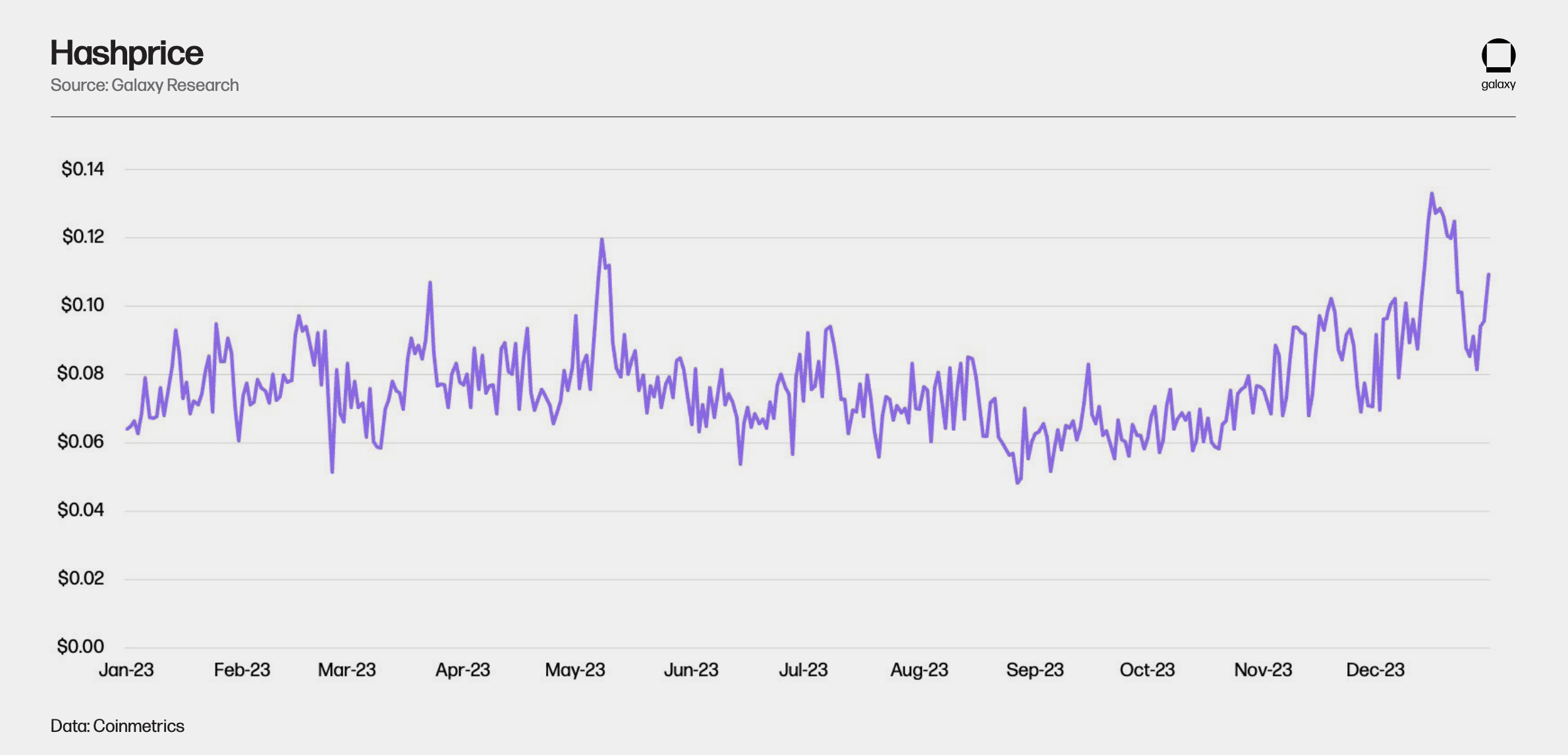What is Bitcoin hashrate?
Bitcoin hashrate refers to the overall computational power that miners contribute to the Bitcoin network. It represents the total number of calculations (hashes) that the network can perform every second to validate and secure transactions.
A hash is an alphanumeric code generated randomly, and hashing involves attempting to guess that code or something very close to it. The hash rate represents the number of guesses per second made by computers on the network, whether it's from a single miner, a mining pool, or the entire network combined.
The global Bitcoin network hashrate, measured in hashes per second (H/s), is determined by factors like mining difficulty and block time. As the hashrate increases, abbreviations like EH/s are used to represent the large numbers involved.

Currently, the Bitcoin hashrate stands at 582.96 EH/s, with a mining difficulty of 81.73 T at block height 831,437. The hashrate doesn't dictate block-solving speed; block time is regulated by mining difficulty adjustments.
Historical context
Initially, Bitcoin mining could be done using regular computers. However, as the network grew, miners developed more powerful hardware, such as ASIC (Application-Specific Integrated Circuit) machines, to compete for block rewards. This led to a significant increase in the Bitcoin hashrate over time.
The hashrate has experienced fluctuations due to various factors, including changes in mining difficulty, the introduction of more efficient mining equipment, and shifts in the price of Bitcoin. Despite these fluctuations, the overall trend has been upward, reflecting the growing interest and investment in Bitcoin mining.
How does it work?
Miners use specialized computer hardware to solve complex mathematical problems, known as cryptographic hashes. These calculations ensure the integrity of transactions and help create new blocks in the Bitcoin blockchain. The hashrate measures how quickly miners can perform these calculations.

To calculate Bitcoin mining profits, use our Bitcoin mining calculator based on the current hashrate and difficulty. The Bitcoin hashrate is calculated based on factors like the current difficulty level, defined block time, and average block time of recent blocks. You can check the global Bitcoin hashrate using the "getnetworkhashps" command in most full Bitcoin nodes.
The hash rate measures the number of hashes (or guesses) per second on a blockchain network, indicating its processing power. The larger the network, the higher the hash rate. Hash rate is commonly expressed in different units:
- Kilohash per second (KH/s): 1,000 hashes per second, typically slow.
- Megahash per second (MH/s): 1 million hashes per second, usually from a single GPU or CPU.
- Gigahash per second (GH/s): 1 billion hashes per second, from a smaller mining pool or GPU cluster.
- Terahash per second (TH/s): 1 trillion hashes per second, typically from a single ASIC or large mining pool.
- Petahash per second (PH/s): 1 quadrillion hashes per second, often from a large mining pool.
- Exahash per second (EH/s): 1 quintillion hashes per second, usually from a huge mining pool or the entire network.

Since the mining difficulty determines the number of hashes required to solve the next block, it's best to use the current difficulty level to estimate how many Bitcoins can be mined within a certain timeframe.
Why is it important?
A higher hashrate indicates a more secure network, as it becomes increasingly difficult for any single entity to control the majority of the computational power. It also enhances the network's resistance to attacks and ensures the smooth functioning of transactions.
The hash rate serves as a critical metric indicating the security level of a blockchain network and the mining difficulty for miners to receive block rewards. A higher hash rate signifies increased network security, as more miners are actively engaged in mining blocks, reducing the risk of malicious attacks on the network.
In essence, the Bitcoin hashrate serves as a vital metric for assessing the network's security and efficiency, playing a crucial role in maintaining the integrity of the Bitcoin blockchain.
A lower hash rate indicates reduced computing power needed to validate and add transactions to a cryptocurrency blockchain. This could potentially decrease the decentralization of the crypto network, as fewer miners would be required to control it.
Decreased decentralization poses higher risks for investors and crypto platforms. If a malicious entity gains control of the network, they could disrupt its operations significantly, leading to potential financial losses for investors and users.
A higher hash rate signifies an increased level of computing power needed to validate and add transactions to a cryptocurrency's blockchain. This heightened computational requirement enhances the security of the cryptocurrency, as it would necessitate a larger number of miners, along with greater energy consumption and time, to potentially take control of the network.
Current situation
Recent data indicates that the surge in Bitcoin's prices has significantly impacted both network difficulty and hash rate. These changes have had implications for miner revenue.
As of the latest update, Glassnode's data indicates that the hash rate has surpassed 610 trillion. Although not the highest recorded hash rate, it remains among the peak levels observed in recent months. While Bitcoin's network difficulty and hash rate have surged, miner fees have not followed suit. An examination of miner revenue fees reveals a recent decline.

Starting the month at over 5%, the fee peaked at over 15% at one point. However, as of the latest update, the fee has dropped to around 3%, marking the lowest point in the year thus far. It's worth noting that while this current fee is low, it is not the lowest observed in recent months. Between July and October 2023, fees ranged around 1.6%.
After a turbulent 2022, miners experienced a much-needed relief in 2023 due to improvements in bitcoin price, increases in transaction fees, and a reduction in energy costs. However, these gains were partially offset by the significant increase in hash rate, which surged by 104% in 2023.
Galaxy Digital report anticipates that up to 20% of the network hash rate from eight mining machine models could be offline by the time of the next bitcoin halving.

Approximately 15-20% of the network hash rate, estimated to be between 86-115 EH, could potentially go offline at the time of the halving. The analysis suggests that the network hash rate for 2024 is expected to range between 675 EH and 725 EH by the end of the year.
The upcoming halving, scheduled for April, will see per-block rewards for mining bitcoin cut from 6.25 BTC to 3.125 BTC. Miners have been focusing on enhancing efficiency and cutting costs ahead of the event, as the reduction in rewards is expected to strain the sector financially.
 u.today
u.today
